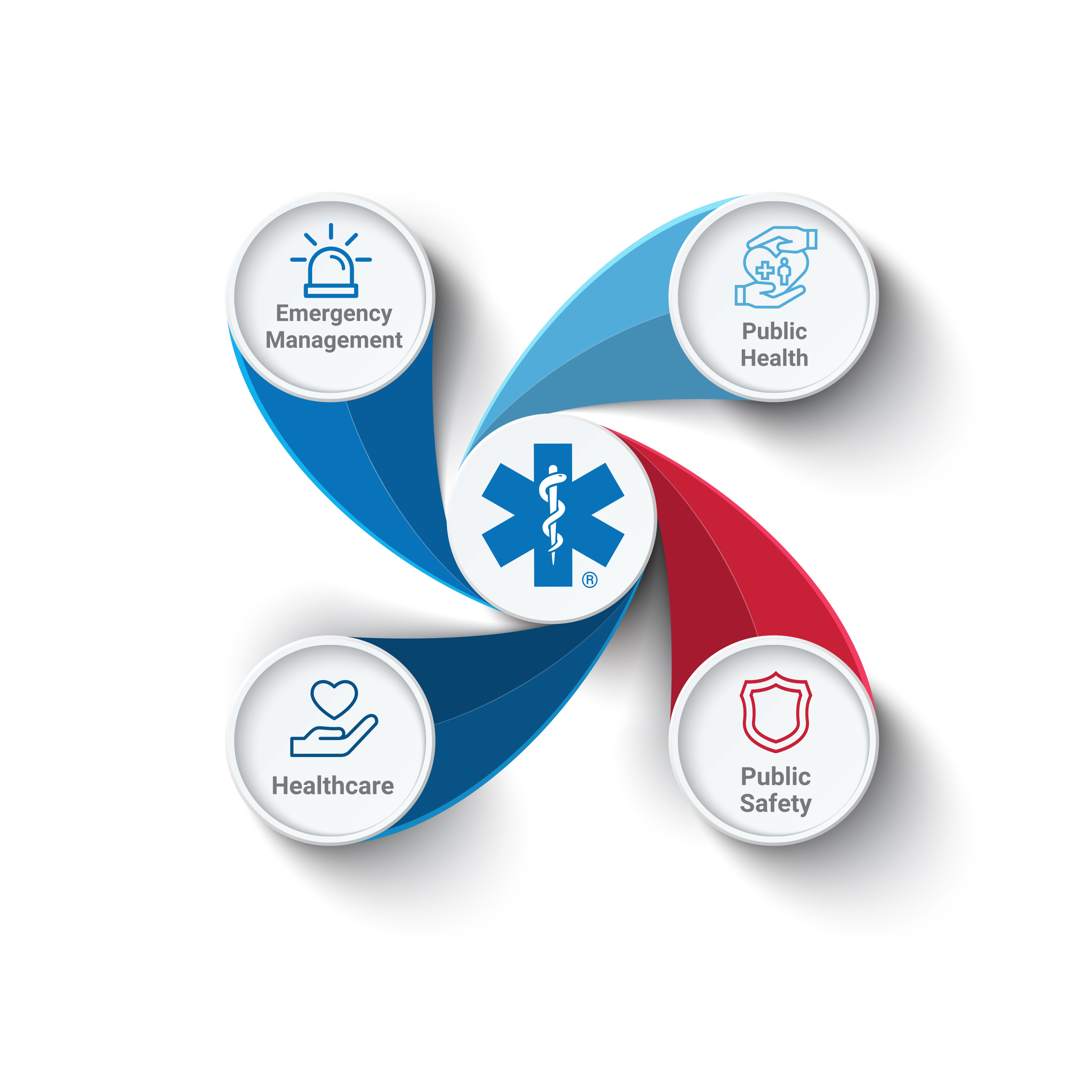EMS Collaboration with Public Safety, Public Health, Emergency Management & Healthcare Disciplines
As a profession whose core mission is to save lives and promote health through emergency medical care, EMS resides at the nexus of public health, public safety, healthcare and emergency management. While each discipline has a specific focus, they share the core goal of preventing death and disability, making interdisciplinary collaboration critical.
Collaboration between EMS, 911, public health and emergency management is a valuable initiative that can help reduce morbidity and mortality during public health emergencies and promote population health and illness/injury prevention.
EMS clinicians—and the data they collect through patient care reports—can serve as a secret weapon for public health. They're also credible advocates for public health: They're respected because of the role they play and the uniform they wear. EMS clinicians are typically dispersed throughout the community, with close ties to neighborhoods. They provide care to those in crisis, no matter the time or place. Very often, they are the individuals to whom their neighbors turn when help is needed.
EMS systems provide crucial real-time or near real-time data, including the type of emergency, location and health and social determinants information. Public health and emergency management professionals are encouraged to use these data resources to inform their prevention, intervention, planning and response efforts:
Public Motor Vehicle Crash Dashboard (National EMS Information System/NEMSIS)
Opioid Overdose Tracker (NEMSIS)
Please search or browse the ems.gov Resources hub for more relevant materials about emerging diseases, the opioid epidemic, preparedness and other topics.
Examples of successful collaborations between EMS, 911, public health and emergency management include:
Sharing opioid overdose data
Using EMS and 911 data for surveillance and early warning of potential chemical or biological threats
EMS clinicians as providers of non-emergent care, including vaccines, testing and directly observed therapy
Public health helping EMS navigate threats such as MRSA, COVID and Ebola
Collaboration in planning for emergency response and evacuation at healthcare facilities and nursing homes
Public health and emergency management assistance to first responders in acquiring PPE and other resources
EMS assistance with harm reduction and access to treatment for substance use disorder through naloxone leave-behind programs and suboxone administration, and collaboration with substance use disorder prevention and treatment programs
EMS, public safety, public health and emergency management all share the same mission: reducing injury and illness and increasing resilience in the community. Public health and emergency management are critical partners that can help EMS find the resources and funding they need to stay safe and serve the public.



